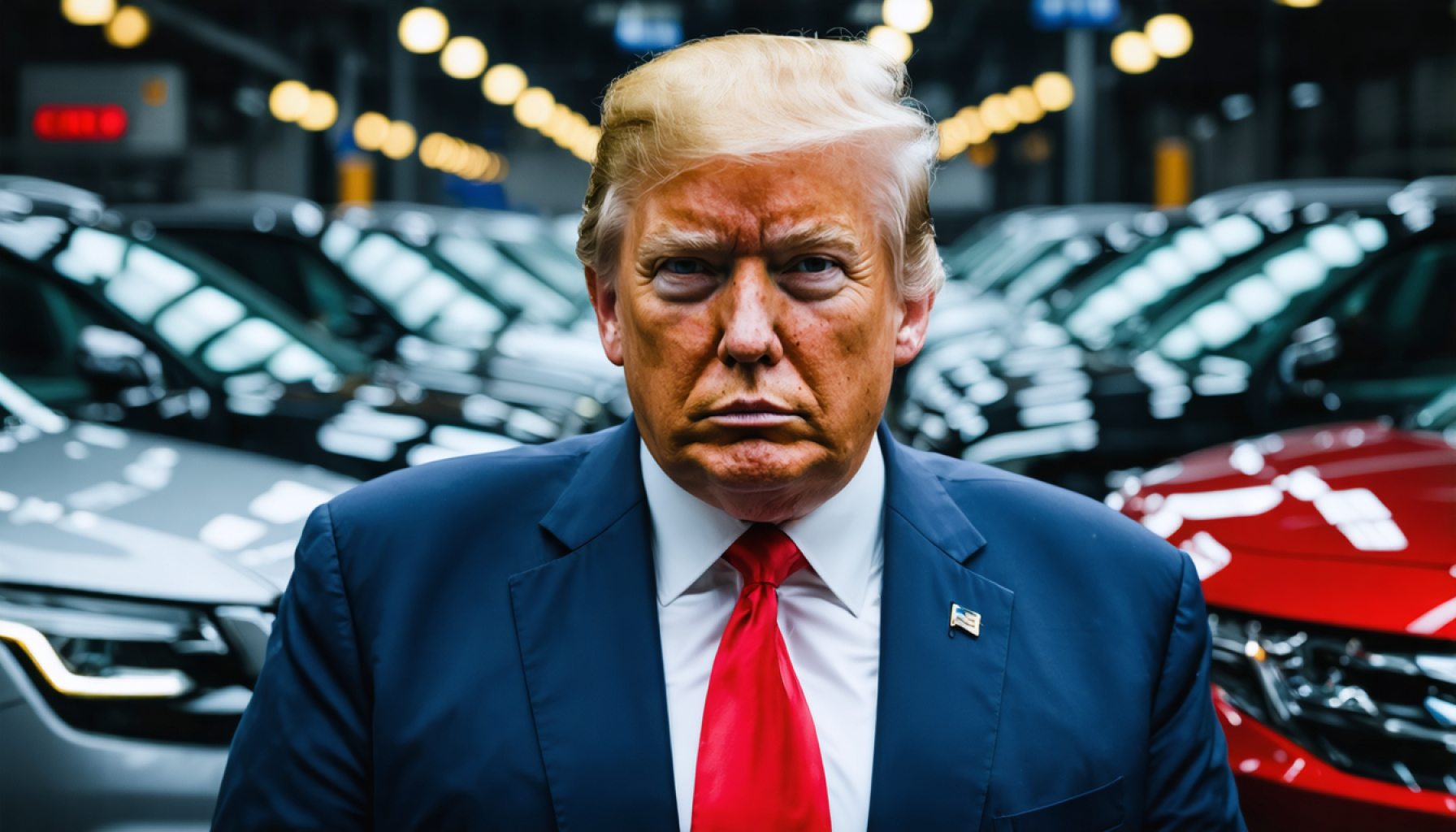- Nikkei 225 tanked by 2.2% following U.S. President Trump’s announcement of a 25% tariff on automobile imports, impacting major Japanese brands like Toyota and Honda.
- South Korea’s Kospi index fell 1.8%, with car manufacturers Hyundai and Kia experiencing notable share declines.
- Stock markets in Hong Kong and Shanghai also saw downturns, reflecting broader apprehension over potential trade disruptions.
- U.S. auto giants General Motors and Ford were adversely affected, though Rivian and Tesla remained resilient, benefiting from domestic production advantages.
- Companies worldwide are reassessing strategies amid uncertainty about Trump’s tariffs’ efficacy and potential economic impact.
- There is speculation that Trump might adopt a more measured tariff strategy to avoid destabilizing the global economy.
- Investors remain cautious, as unclear details of the tariffs could slow economic activity, with markets reacting to policy changes.
- The global economy’s resilience is poised to be tested, with high stakes and uncertain outcomes on the horizon.
Amid the bustling financial districts of Asia, a new ripple of uncertainty stirred fear among investors. Tokyo’s glittering skyline witnessed a storm of sell-offs as the Nikkei 225 plunged by 2.2%. The cause? A bold proclamation by U.S. President Donald Trump to slap a hefty 25% tariff on automobile imports. Iconic Japanese giants like Toyota and Honda watched their shares tumble, dragged down by 2.7% and 2.3% respectively, as skittish investors reacted swiftly.
Beyond Japan, the tremors of this potential trade upheaval reverberated across the Asian landscape. South Korea’s Kospi index wasn’t spared, losing 1.8%. Hyundai and Kia both felt the bite with significant share declines, a testament to the precarious whiplash of global trade policies. Even the vibrant markets in Hong Kong and Shanghai couldn’t escape the downtrend, reflecting a collective apprehension over the impending economic shifts.
Yet it isn’t just Asia feeling the pinch. Back in the United States, Wall Street experienced its own turbulence. Heavyweights like General Motors and Ford faltered significantly, battered by the ripple effects of Trump’s protectionist measures. However, not all in the auto sector faced gloom. U.S.-based electric vehicle pioneers Rivian and Tesla managed to buck the trend, enjoying some investor confidence due to their home-ground production advantage. This variance highlights the complex tapestry of global supply chains, where parts and pieces crisscross borders before culminating in a finished product.
Across industries, companies started re-evaluating potential fallout. Would Trump’s tariffs accomplish what he claims—inviting more manufacturing to American soil—or merely stir economic unease? Many are holding their breath, waiting for more precision on how exactly these tariffs will unfold, given the complicated interdependencies in international trade.
Despite the tumult, there remains a whisper of optimism. Some speculate that Trump could recalibrate his approach, opting for a more nuanced, less disruptive tariff strategy that doesn’t scorch the global economy. If consumers and businesses pull back on spending in anticipation of these tariffs, it might slow economic momentum, transforming anticipation into a self-fulfilling prophecy of economic cooling.
As investors navigate this choppy terrain, the global economy’s resilience stands to be tested. Until clarity emerges, markets remain jittery, with every whisper of policy change potentially igniting either hope or havoc. The stakes are undeniably high, and as the world watches closely, only time will reveal the true impact of this unfolding drama.
Exploring the Ripple Effect: How Trump’s Tariffs on Automobile Imports Could Alter the Global Economic Landscape
Context and Background
In recent financial turmoil, U.S. President Donald Trump announced a proposed 25% tariff on automobile imports, causing immediate repercussions across global markets. The Nikkei 225 in Tokyo dropped 2.2%, significantly affecting major automotive companies like Toyota and Honda. This announcement has sent ripples through various stock markets and industries both in Asia and the United States, highlighting the interconnectedness of global trade.
How-To Understand the Global Trade Impact of Tariffs
1. Identify Key Players: Recognize the countries and companies most affected—Japan, South Korea, China, and major U.S. manufacturers are at the forefront.
2. Analyze Supply Chains: Understanding the intricate global supply networks can reveal vulnerabilities which tariffs might expose.
3. Monitor Policy Announcements: Stay updated with policy changes which could pivot market trends quickly.
Real-World Use Cases and Industry Trends
– Shift in Manufacturing Base: Companies may look to shift production to the U.S. to avoid tariffs, altering international investment trends.
– Rise of Local Sourcing: Increased tariffs could incentivize companies to invest in local resources and partners, enhancing domestic production capacities, particularly for parts and components.
Market Forecast and Predictions
Predictions suggest that if tariffs proceed, an initial downturn in global supply chains for the automotive sector could occur, with subsequent shifts in production locations. However, a potential reversal or reduction in tariffs could stabilize affected markets. U.S. electric vehicle companies like Tesla and Rivian may see a short-term boost as they are less affected by import tariffs.
Controversies and Limitations
– Trade War Concerns: This move by Trump potentially escalates the ongoing trade war narrative, which has broader implications beyond the automotive industry.
– Consumer Impact: Increased tariffs might lead to higher prices for consumers, impacting spending behavior and thereby the economy.
– Diplomatic Tensions: Trade policies might create diplomatic strains with economically strategic partners such as Japan and South Korea.
Projections and Strategic Recommendations
– Diversifying Supply Chains: Companies should consider diversifying their supply networks to mitigate risks associated with single-source dependencies.
– Investing in Automation: As reshoring increases, automation can help absorb domestic production costs.
– Staying Agile: Businesses must remain adaptable, ready to pivot strategy with new trade developments.
Conclusion and Actionable Tips
For investors and companies navigating this complex terrain, understanding geopolitical dynamics and maintaining flexible strategies are crucial. By anticipating policy shifts and diversifying operations, stakeholders can better withstand potential economic disruptions. For continuous updates on global economic trends, visit BBC and CNN.
